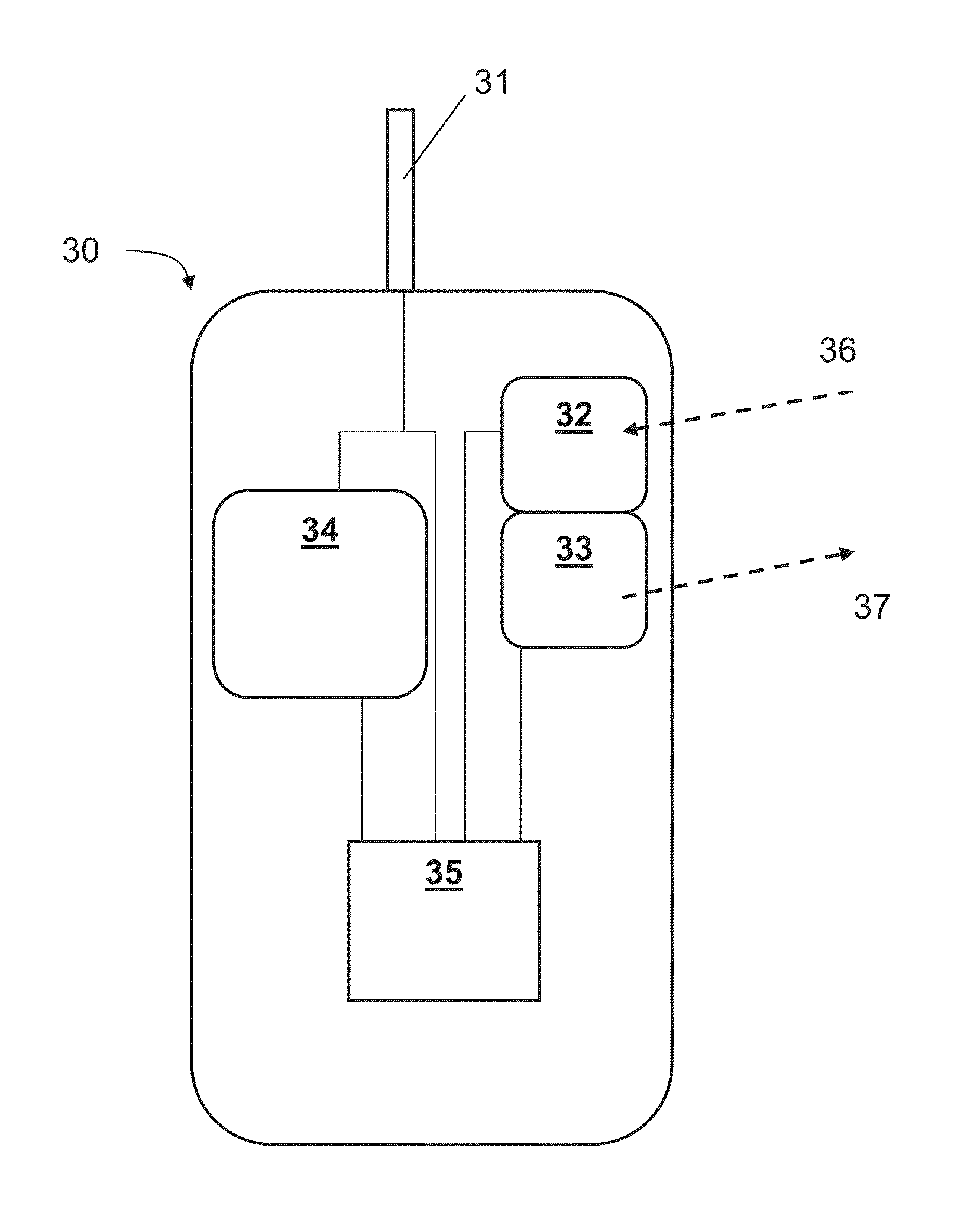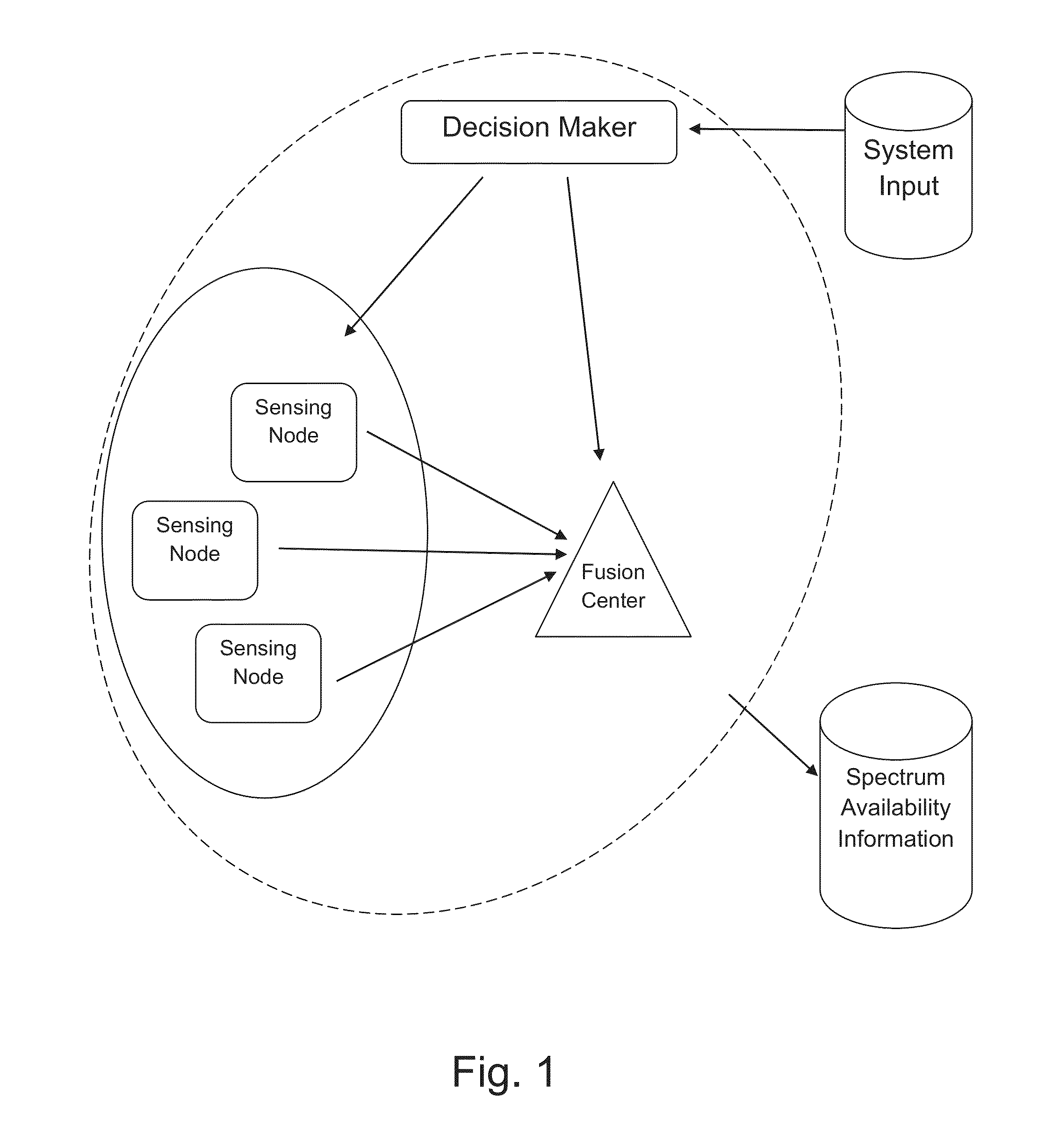Method and arrangement for adaptive signal detection
- Summary
- Abstract
- Description
- Claims
- Application Information
AI Technical Summary
Benefits of technology
Problems solved by technology
Method used
Image
Examples
Embodiment Construction
[0015]The present invention aims at creating a system for adaptive allocation of resources for identifying unoccupied channels. In short, the system includes a selection of suitable spectrum sensing methods and the selection of combining techniques to meet the requirements set for the system in the specific operational environment. The requirements may involve for example time-related issues, time used to sense channels versus time needed in transmitting information, or reliability related issues, which method to use to find out spectrum occupancies reliably enough. One aspect of the problem is that it easily turns into optimization problem, where limited time, limited complexity, and required reliability form the cost function together.
[0016]As seen in FIG. 1, the system consists of distributed cognitive radio nodes, one or more fusion centers and a decision maker. The cognitive radio nodes are, for example, handheld terminals, base stations, other network components or specific se...
PUM
 Login to View More
Login to View More Abstract
Description
Claims
Application Information
 Login to View More
Login to View More - R&D
- Intellectual Property
- Life Sciences
- Materials
- Tech Scout
- Unparalleled Data Quality
- Higher Quality Content
- 60% Fewer Hallucinations
Browse by: Latest US Patents, China's latest patents, Technical Efficacy Thesaurus, Application Domain, Technology Topic, Popular Technical Reports.
© 2025 PatSnap. All rights reserved.Legal|Privacy policy|Modern Slavery Act Transparency Statement|Sitemap|About US| Contact US: help@patsnap.com



